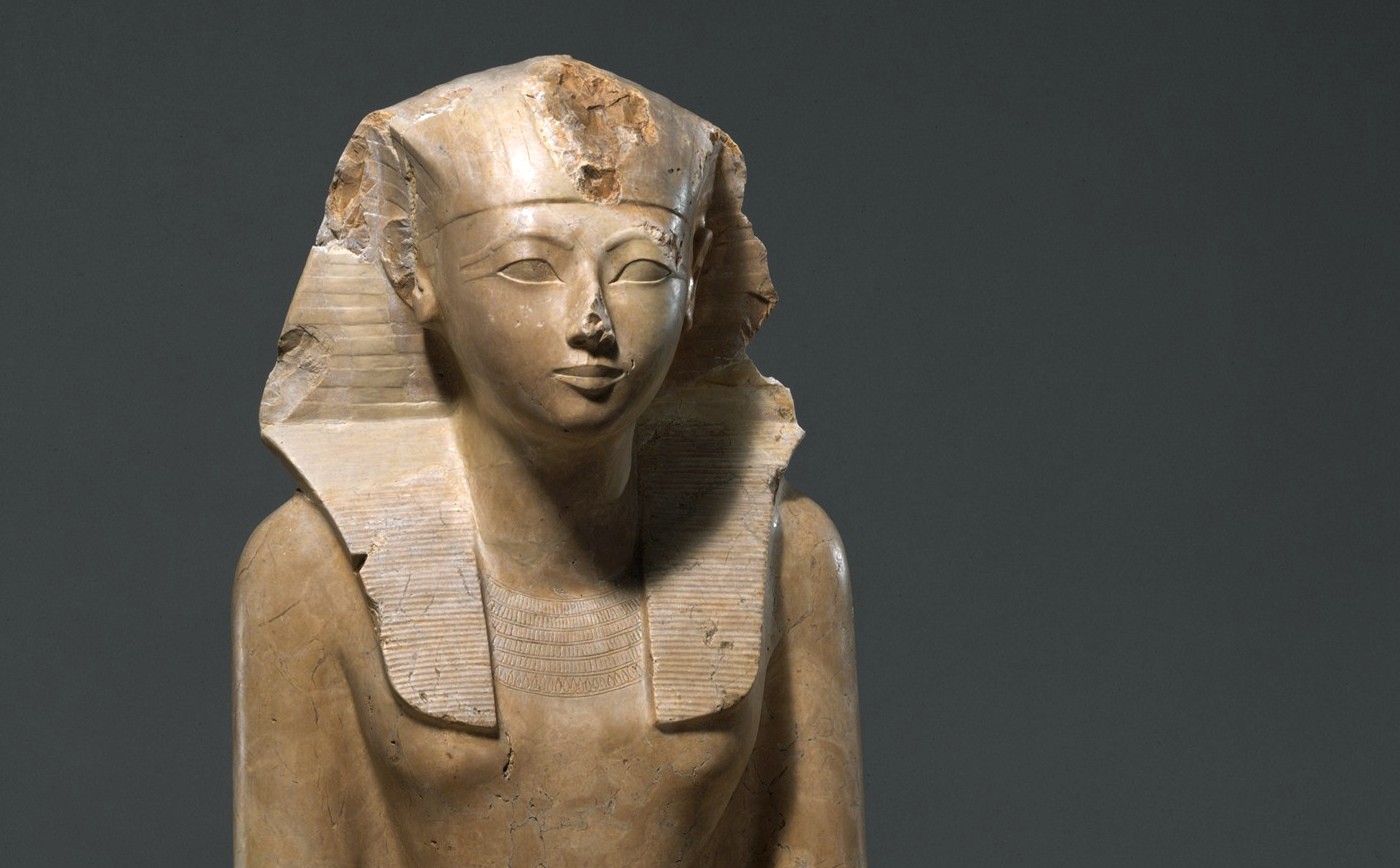Who needs to be a man to be king?
In honour of International Women’s Day, it’s time to clear up a popular misconception about one of ancient Egypt’s most famous queens – Hatshepsut.
We’ve all heard the story of how the young Queen of Egypt, Hatshepsut, stepped-in to look after the affairs of state for her young step-son, Thutmose III, after her husband, Thutmose II, died. Years later, at about the time she should have made way for the king to rule in his own right, Hatshepsut declared herself co-king, effectively pushing Thutmose to the background – for the next 20 years. Since the throne of Egypt was a purely male prerogative, to win official support for her reign, Hatshepsut portrayed herself as a male king – complete with a false royal beard.
It’s a good story. Too bad the last part is wrong.
Queen Hatshepsut never pretended to be a male. Being the ‘king’, she used the traditional Egyptian symbology to say that she was the ruler. She was simply getting the ‘royal treatment’.
The court artists sometimes struggled with this new set of circumstances and resorted to portraying her with male features, however the hieroglyphs proclaiming her name bear feminine modifiers.
She wasn’t trying to fool anyone.
A number of Hatshepsut’s statues display a blend of traditional kingly attributes and the features of a beautiful woman. This statue of Hatshepsut came from her Memorial Temple at Deir el-Bahri and is now housed in the Metropolitan Museum of Art in New York.
Read more about Hatshepsut’s controversial reign and the backlash after her death by subscribing to Nile Magazine.
